I.
On July 17, 1944, the largest homeland disaster that the United States experienced during World War II occurred at the Port Chicago Naval Magazine, an isolated deep-water harbor on the southern banks of Suisun Bay, about thirty miles northeast of Oakland, California. Some 320 men, most of them African American sailors, were instantly killed when two cargo ships being loaded with ammunition exploded. Responses to the disaster, both immediately following the incident and for many years afterwards, reflect the deep racial injustices of the era (see Allen; Sheinkin). The ways in which Port Chicago is recalled today, both as a wartime disaster deemed worthy of historical recovery and a place and event that is the subject of a national memorial and the site of tourism, suggests the profound impact of the civil rights movement on the United States as well as new directions in commemoration. This essay considers how contemporary recollections of the Port Chicago disaster both challenge and reify conventional narratives about World War II. Accounts of disaster and racial bias are increasingly acknowledged in narratives of the war today, and American history in general, and serve to disrupt dominant understandings of the conflict as an exceptionally “good” war. These accounts do not, however, displace a prevailing martial ethos in contemporary America, including ubiquitous notions that all Americans are “good warriors.”
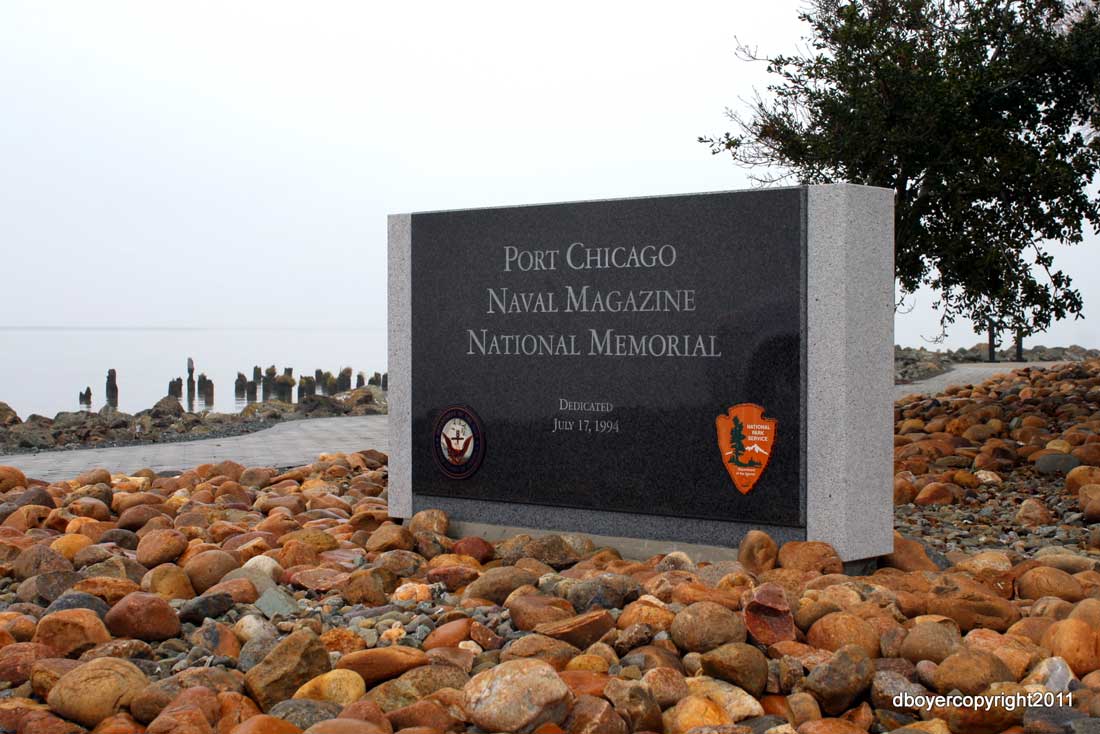
Almost a century before the 1944 disaster, the town of Port Chicago—located 1.5 miles from the harbor—was settled as an agricultural, industrial, and trading center. Originally inhabited by Chupcan (Bay Miwok) Indians, the area was invaded and conquered by Mexico in the early nineteenth century and then given as a large private land grant to Spanish rancher Salvio Pacheco in 1834. In 1848, the land was ceded to the United States following the Mexican-American War, and in 1850 it became part of the new state of California.
Located in central Contra Costa County and originally called Bay Point, the town was surrounded by rolling hills. Modest-sized farms produced wheat and barley, while its waterfront was used for loading and transporting cargoes of foodstuffs, coal, and other goods from northern regions of the state to San Francisco. Access from the Sacramento and San Joaquin rivers to Suisun Bay via the Carquinez Strait facilitated use of the harbor. Regional lumber interests seeking sales yards and shipping routes found the area ideal, and in the early twentieth century the Coos Bay Lumber Company was established, becoming one of the largest finishing mills in the United States. Served by three railroad lines—the Santa Fe, Southern Pacific, and Western Pacific—the town was also a major transportation hub. In 1931, when it was renamed Port Chicago, the town had a population of several thousand people and featured several schools, stores, and churches, as well as a library, hospital, post office, Odd Fellows hall, hotel, and a movie house called the Blue Star Theatre. Its main street was five blocks long; its residents lived in modest middle-class homes. It was, author Dean McLeod recounts, an “all-American town” (McLeod, Port Chicago; Dean L. McLeod, Bay Point 7).
During World War I, Port Chicago’s deep waters, and those nearby, were found ideal for shipbuilding and the United States government awarded contracts to various companies to build 10,000-ton freighters, or merchant marine cargo ships. During World War II, still larger areas of the Bay Area of Northern California were mobilized for their military industrial potential. Mare Island in Vallejo, for example, 20 miles northwest of Port Chicago and the first U.S. Navy base built on the West Coast (in 1854), became a major shipyard, where some 50,000 defense industry workers built scores of submarines, destroyers, and landing craft in a relatively short span of time. Likewise, in the port city of Richmond, 27 miles west of Port Chicago, workers in the Kaiser Shipyards produced some 1,490 vessels (about 27% of the entire U.S. fleet) in record time. Over 240,000 Bay Area residents worked in the defense industry during World War II, including thousands of women nicknamed “Rosie the Riveters.” Many World War II soldiers and sailors served in the area’s numerous Army and Navy installations—including Port Chicago.
II.
Hastily constructed soon after the Japanese attack on Pearl Harbor in December 1941, Port Chicago became a Naval base and supply depot where bombs, shells, mines, torpedoes, depth charges, and small arms were loaded onto cargo ships bound for wartime operations in the Pacific Theater. It was primarily a transfer facility: munitions made in Hawthorne, Nevada and in other arms manufacturing plants throughout the United States arrived at Port Chicago by rail, were briefly held in boxcars parked between concrete barriers, or revetments, and were then manually transferred onto ships at the pier. The base and pier were designed so that two ships could be loaded simultaneously. By July 1944, about 1,800 men worked at the Port Chicago base, including 71 officers, 106 guards (members in the merchant marine), 230 civilian employees, and 1,431 enlisted men. Ordnance battalions were comprised solely of enlisted men and were divided into loading divisions of 100. These groups were further divided into platoons and squads, each group responsible for specific transfer duties at the pier.
Working around the clock in eight-hour shifts, the ordnance battalions unloaded the boxcars and moved the munitions by hand onto carts that were then walked or driven to the pier. The munitions ranged in size and scale from 2,000-pound bombs to small caliber bullets. The pier, which had three tracks, was about 20 feet wide and 1,500 feet long. Often, boxcars full of munitions were rolled right up to the pier on one of the three railroad tracks, where the men unloaded large crates of bombs and shells onto cargo netting that was then lifted onto the ships. The nets were lowered into the hatch of the ship, where boxes of munitions were stacked layer by layer in various cargo holds. According to Navy documents, in the months prior to the explosion the rate of tonnage by the ordnance battalions at Port Chicago was 8.2 tons per hatch per hour while stevedores at the Naval Ammunition Depot on Mare Island averaged 8.7 tons per hatch per hour (“Port Chicago”). Officers at Port Chicago pushed the ordnance battalions to load the ships faster, setting a desired goal of 10 tons per hour per hatch.
On the evening of July 17, 1944, two cargo ships were docked at the Port Chicago pier: the S.S. Quinault (Victory type vessel) and the S.S. Bryan (a Liberty type vessel). The S.S. Quinault had arrived at the port around 1800 (6 p.m.) that evening and was empty except for a partial load of fuel oil. The S.S. Bryan had moored at the pier a few days earlier (on July 13) and its five cargo holds, each four-stories deep, were packed with almost 5,000 tons of ammunition. By the evening of July 17, the holds were about half full. Sixteen boxcars filled with 430 tons of explosives were rolled up at the pier, ready to be unloaded. Then, just after 22:00, at 10:18 p.m. to be exact, two explosions occurred in quick succession, obliterating the two cargo ships, the 1,500-foot long pier, the boxcars on the dock, and everyone immediately present at the scene.
One ship completely disappeared; the other was blown into bits and thrown 500 feet into the bay. A huge cloud of steam, fire, and debris rose 12,000 feet into the sky. An Air Force pilot cruising over Suisun Bay at the moment of the explosion reported seeing suitcase-sized pieces of flaming metal hurtle past his plane. Barracks and other buildings on the base were severely damaged, and boxcars parked inside the concrete revetments were crushed by the blast. Huge chunks of shrapnel were blown for miles in all directions: in the town of Port Chicago, 1.5 miles away, a 300-pound chunk of steel landed in the middle of Main Street. Inside the Blue Star Theater, 195 people watching China, a war movie starring Alan Ladd and Loretta Young, escaped unharmed just before the roof caved in. In Berkeley, thirty miles away, seismographs recorded the explosion as the equivalent of an earthquake measuring 3.4 on the Richter scale (Sheinkin 61).
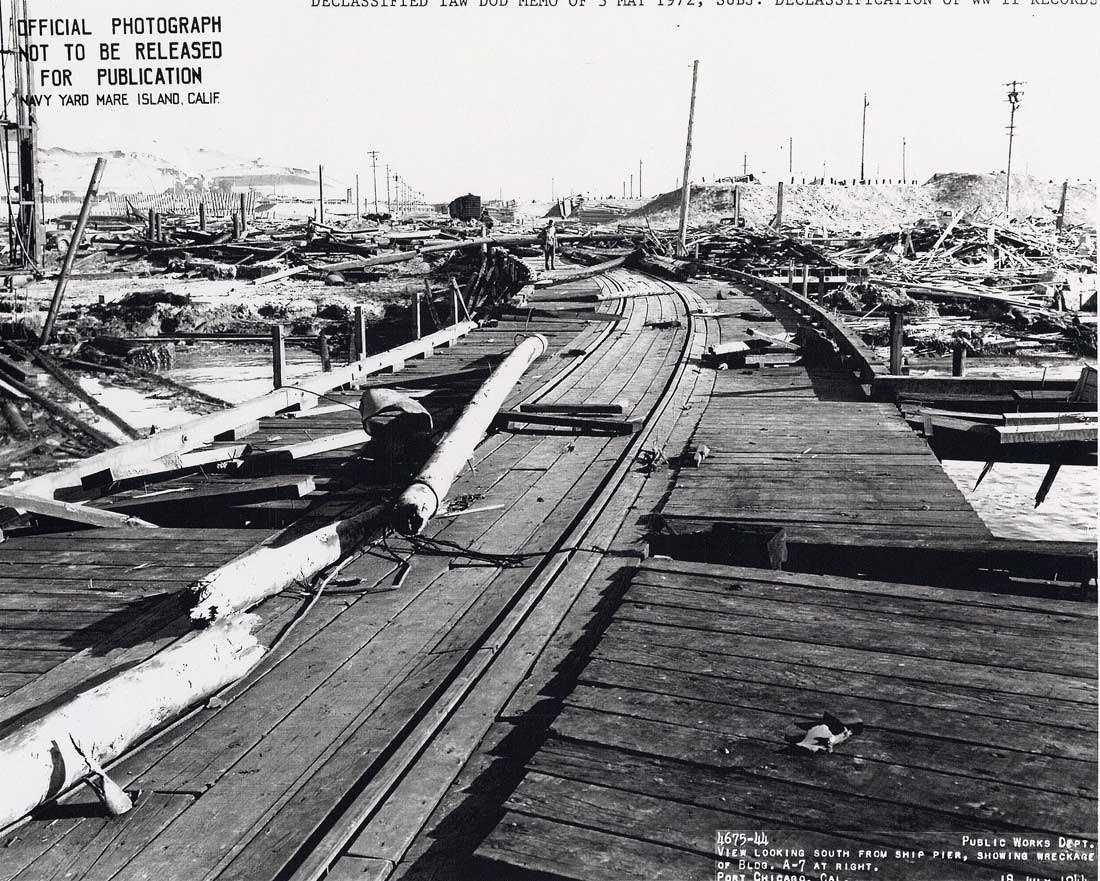
The human toll of the disaster was terrific: 320 men died instantly, and 390 military personnel and some civilians were seriously injured. Two-thirds of the dead were African American servicemen, their deaths accounting for 15% of total African American military losses during World War II. Likewise, 233 of those who were injured were black sailors and soldiers. These racial demographics help explain how the Port Chicago disaster was interpreted in 1944, and how it is understood and commemorated today.
All of the enlisted men who comprised the ordnance battalions and worked as munitions loaders at Port Chicago were African American. All of the commanding officers at the Port Chicago Naval Magazine were white, as were all of the merchant marine guards at the base. Racial discrimination was systemic in the Navy, as throughout the U.S. military: by mid-1943, for example, there were more than 100,000 African American servicemen in the U.S. Navy, and no black officers (Guttridge 211). As per U.S. military (and domestic) policies at the time, troops were segregated at the Port Chicago base, with the black enlisted men living in separate barracks about one mile from the pier. Segregation existed on all levels and in all quarters: all of the men shared the one mess hall on the base, but black sailors were not permitted to eat until white military personnel had left the premises.
Although black sailors were trained for naval rating—as ship mechanics and divers, for example—in the segregated Navy of World War II most of them were shunted into dead-end and shore-based positions as stevedores, i.e. dockworkers consigned to the jobs of loading and unloading ships. As one black sailor who served at Port Chicago later recalled, “You didn’t see no white boys out there loading. I guess they figured that was all we were good for” (Gay qtd. in Sheinkin 50).
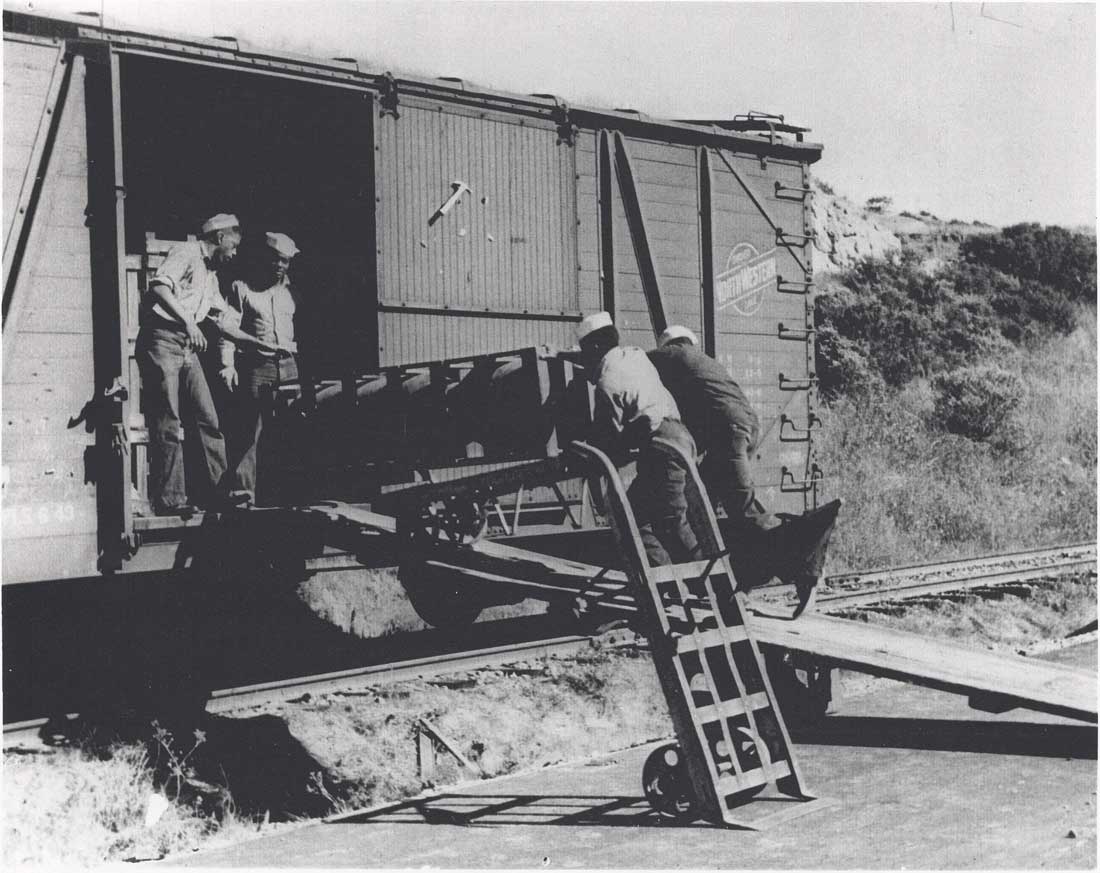
Conditions for black sailors at Port Chicago were especially bad: theirs was “a thankless, depressing, and dangerous line of work” that no sailor was likely to relish (Guttridge 212). Worse, officers held “speed-up” contests among the ordnance battalions and placed bets on how many tons the men could load per hour. Competition was encouraged by posting the daily tonnage loaded by each ordnance division on a blackboard placed right at the pier (Sheinkin 47). And furthering these tense and dangerous working conditions was the fact that the ordnance battalions did not receive formal training in the proper handling of munitions, and Navy leadership dismissed offers from the International Longshoremen’s and Warehousemen’s Union (ILWU) to teach safer loading practices. As one sailor later recalled: “We were just shown a box-car full of ammunition, wire nets spread out on the docks and the hold in the ship and told to load” (Hamilton 222).
At the official military court of inquiry held after the disaster, which convened on July 21, 1944 and lasted for 39 days, Navy officials justified this lack of training on racist terms. African American military personnel, they argued, were incapable of learning and were essentially expendable: “Because of the level of intelligence and education of the enlisted personnel, it was impracticable to train them by any method other than by actual demonstration. Many of the men were incapable of reading and understanding the most simple directions” (“Port Chicago”). The inquiry concluded that no one was to fault for the explosion—neither the untrained enlisted men handling dangerous materials nor the officers in charge. Navy officials asked Congress to award each victim’s family a benefit of $5,000 for their wartime service but when Mississippi congressman John Rankin learned that most of the victims were African American, he demanded that the amount be reduced to $3,000. An outspoken racist and white supremacist, Rankin further demanded that Japanese Americans be placed in “concentration camps” (his words) during World War II, and that blood collected by the Red Cross from African American and Japanese American donors be labeled and separated, lest it “contaminate” potential white recipients (Allen 67; Daniels; Weglyn 54).
Following the disaster, many of the white officers at the Port Chicago base asked for and were granted 30 days leave. African American sailors were refused leave and were assigned the gruesome task of clearing the area of wreckage and searching for remains. Of the 320 dead, only 51 bodies were sufficiently intact to be positively identified. Then, just a few weeks after the disaster, and with no discussion of why the horrific explosion of July 17 had occurred or how to prevent such a disaster from happening again, the black sailors were ordered back to work loading ordnance at the Mare Island Navy Yard in Vallejo.
Over 250 of the men refused, understandably terrified by the possibility of another explosion—especially since their dangerous circumstances remained unchanged: there continued to be no training in munitions handling, and officers continued to encourage the rushed, and competitive, loading of ordnance. As Joe Small, a survivor of the Port Chicago explosion, later recalled: “I wasn’t trying to shirk work. I don’t think these other men were trying to shirk work. But to go back to work under the same conditions, with no improvements, no changes, the same group of officers that we had, was just—we thought there was a better alternative” (qtd. in Thompson; see Allen 76–77). Under threat of the death sentence for “mutinous conduct” during wartime, 208 of the African American sailors agreed to return to work. But fifty of them, including Joe Small, refused and were charged with mutiny. Court-martialed together, the “Port Chicago 50” were found guilty and sentenced from eight to fifteen years of hard labor in federal prison at the Terminal Island Disciplinary Barracks in San Pedro. All of the men were dishonorably discharged.
The court-martial trial of the Port Chicago 50 was no example of equal justice: the black sailors were belittled as “primitive” and “emotional” during court hearings, were themselves blamed for the explosion, and were not allowed to testify on their own behalf. The judge kept falling asleep during testimony. But the trial had the effect of raising national consciousness about racial discrimination in the United States military and was a significant catalyst in the postwar civil rights movement. Thurgood Marshall, then chief counsel for the NAACP (the National Association for the Advancement of Colored People) and future Supreme Court justice, observed portions of the trial and held a press conference on October 10, 1944, charging Navy prosecutors with racism and prejudicial intent. As Marshall remarked: “This is not 50 men on trial for mutiny. This is the Navy on trial for its whole vicious policy toward Negroes. Negroes in the Navy don’t mind loading ammunition. They just want to know why they are the only ones doing the loading!” (Marshall qtd. in Hamilton 222). In 1945, the NAACP issued a pamphlet titled Mutiny? The Real Story of How the Navy Branded 50 Fear-shocked Sailors as Mutineers.
Shortly thereafter, U.S. Secretary of the Navy James Forrestal reduced the sentences of the Port Chicago 50 and in 1946, a year after the end of World War II, the men were released from prison and returned to active duty. Ironically, many of them were sent on ship assignments overseas—exactly the sort of military duty they had hoped for when they enlisted in the Navy at the start of World War II (Starr 121). In 1948, President Harry Truman signed Executive Order 9981 abolishing military segregation, which was put into practice during U.S. military action in Korea. The Port Chicago 50 have never been exonerated but in 1999, President Bill Clinton pardoned Freddie Meeks, one of the condemned men (Glaberson).
As a Naval base, Port Chicago thrived after World War II. Three new piers with six berths were built—in a different location from the site of the base’s original pier—and were operational by April 1945. In early 1946, the base was renamed the US Naval Ammunition Depot, Concord. Port Chicago became the nation’s largest postwar Naval magazine: over 76% of the munitions used during the Korean War, for example, were shipped through Port Chicago, as were much of the munitions shipped to Southeast Asia during the Vietnam War.
The town of Port Chicago also grew with this postwar military industrial expansion, reaching its highest population of 3,500 in 1953, when it featured some 70 businesses. Navy plans to further expand the Port Chicago base were hindered, however, by a 1955 study from the Army-Navy Explosive Safety Board, which determined that the town was much too close to the Naval magazine and needed to be moved further away or destroyed for safety reasons. Compelled by the economic and emotional imperatives of the Cold War, whereby defending American global military interests took priority over community interests, the Navy launched nine different lawsuits to dismantle the town; it also bought large swaths of surrounding land to create a “safety zone” around the ammunition depot. In 1968, the federal government won its legal claim against the town on the grounds of eminent domain, and purchased the properties of the few remaining residents. The town of Port Chicago was subsequently razed: sacrificed to protect national security (McLeod, Port Chicago 115). Renamed the Concord Naval Weapons Station, the land remains an active military installation and continues to operate as an ammunition depot.
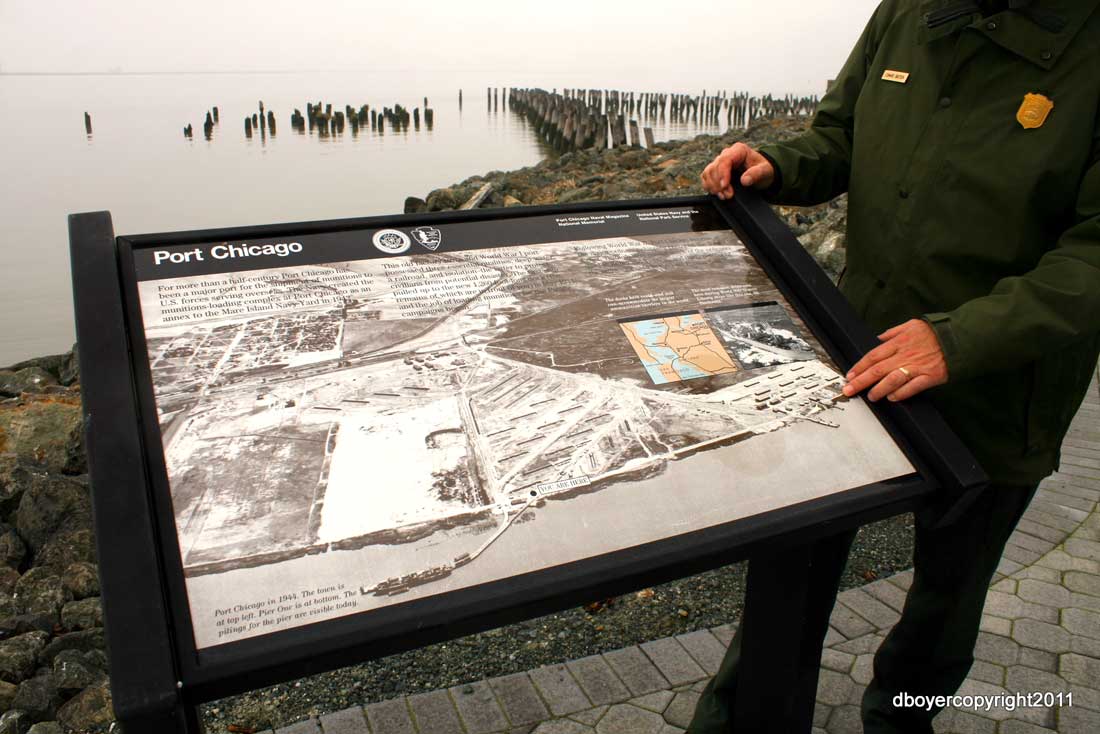
III.
For decades, the full story of the Port Chicago disaster of July 1944 was declared “classified” information and rendered virtually absent from historical narratives of the “good war.” This refusal to reckon with the actual details of what happened, and to whom, fueled a number of conspiracy theories including widespread rumors that the explosion that occurred at Port Chicago was a nuclear explosion, and that the U.S. government deliberately targeted a population of African American sailors and soldiers to test the atom bombs that were then being developed in the laboratories of Los Alamos, New Mexico. Today, a number of writers continue to expound on this theory, citing evidence, for example, of a low level radioactive plume to the northeast of Port Chicago (see Vogel; Scrivener; Caul and Todd).
In recent years, however, the story of Port Chicago’s disaster has been increasingly included in historical accounts of World War II. In 1994, on the fiftieth anniversary of the disaster, a group of private citizens erected a memorial at Port Chicago’s waterfront dedicated to the sailors, members of the merchant marine, and civilians who lost their lives there on July 17, 1944. In 2009, when President Obama signed the Defense Authorization Act, he included a measure officially designating the site the Port Chicago Naval Magazine National Memorial. It became the 392nd unit in the National Park System, and joined a select group of 29 other specially designated national memorials that are managed by the National Park Service (NPS) and pay tribute to a historic person or event—such as the National World War II Memorial, dedicated in Washington, D.C. in 2004.
World War II, in fact, is the subject of intensified commemoration in contemporary America. Newly built World War II memorials and museums include the National D-Day Memorial in Bedford, Virginia (dedicated in 2001), the Rosie the Riveter/World War II Home Front National Historic Park in Richmond, California (dedicated in 2000), and numerous memorials dedicated to World War II veterans in Florida, Iowa, Louisiana, Maine, New Mexico, New York, Pennsylvania, and Wisconsin, among other states. Although the “good war” came to a close seventy years ago, its historical memory continues to broadly circulate (see Doss 187–252). That memory is extensive and inclusive today: permitting the acknowledgement of tragedies such as the Port Chicago disaster but also reworking them in terms of tropes of patriotism and valor. Today’s surge of World War II commemoration can be related to emotional states such as gratitude and shame: from expressions of thanks to Americans who gave their lives to defend their country during wartime, to feelings of shame about how many of those Americans were treated badly because of national policies of racial discrimination and racism.
The surge of such commemoration today further stems from the sense in which war, as Michael Sherry observes, is broadly perceived as the “best way to mobilize Americans and to capture their problems and conflicts” (Sherry 460-61). War is the central metaphor of contemporary American national purpose and identity. Mythologized as a patriotic project, articulated as an economic linchpin, and desired for its explicit, stimulating, visceral, and authenticating qualities, war binds all Americans in shared understandings of the nation’s origins and its futures. It follows, then, that war memorials are the largest body of memorials commissioned in America today. In recent decades, scores of new memorials that pay tribute to African American, Native American, and Asian American soldiers, as well as disabled American veterans and women soldiers, have been dedicated in the United States. The American Veterans Disabled for Life Memorial, for example, located just a few blocks from the U.S. Capitol, was dedicated in October 2014. These memorials reaffirm the nation’s prevalent culture of militarism, cueing Americans to concepts of citizenship, patriotism, and unity as they simultaneously whet their appetites for further martial adventures.
Visiting the Port Chicago Naval Magazine National Memorial requires making a reservation two-weeks in advance and a clearance check: the memorial is located on an active military base. Given this restriction, it is not surprising that it is the third least visited National Park in the United States. Tours begin at the Concord Naval Weapons Station, where visitors are shuttled aboard a small bus and driven 3.4 miles to the memorial site, where they follow a ranger-guided tour. The memorial’s half-acre site is modest, featuring a small memorial situated on the waterfront, near the location of the original pier. It consists of text-panels featuring maps and photographs, granite markers listing the names of the dead, a low round bench, a few carefully posed munitions shells (decommissioned), and a U.S. flag. Visitors can walk nearby to a few of the concrete revetments, where boxcars loaded with explosives were once parked.
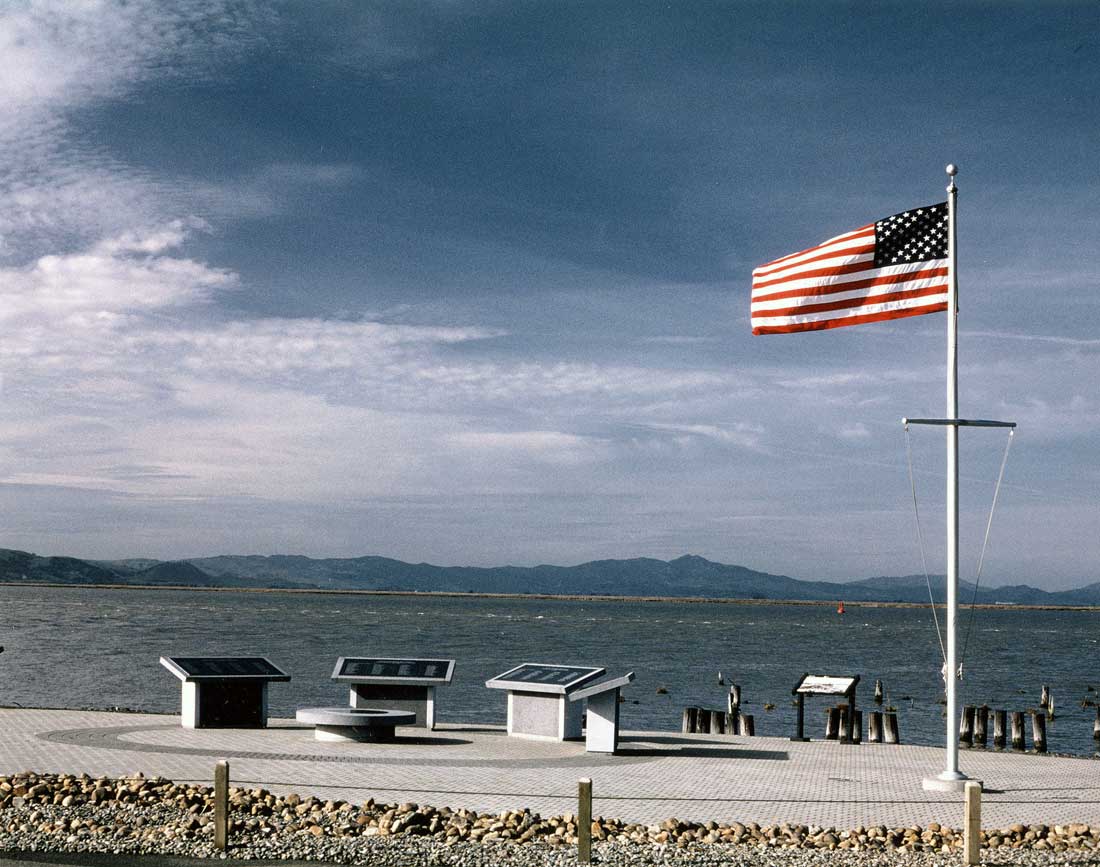
Over the past few decades, the National Park Service has assumed a leadership role in addressing issues of racial injustice in America, dedicating new memorials and historic sites to subjects such as slavery and civil rights. In Philadelphia, for example, an outdoor memorial called the President’s House frames the house (destroyed in the 1830s) where George Washington and John Adams, and at least nine African slaves that they owned while each was President, lived from 1790–1800. The house’s slave quarters are just five feet from the entrance to the Liberty Bell Center, where the nation’s premiere icon of freedom is displayed. Dedicated in 2010, the memorial consists of low walls that roughly frame the footprint of the original brick house, rectangular slabs with mock fireplaces and video screens, and an interpretive program of images, text, and sound recordings that emphasize how “freedom and slavery” together made the new nation. “It will give us an opportunity to talk about the heroic and the shameful that took place on this site,” the park superintendent remarks, adding: “‘We the People’ applies to everyone who was part of what made this nation” (Reidenbach qtd. in Slobdzian; Salisbury; Doss 259–60; Gessner 383–89). Likewise, in recent years the NPS has dedicated memorials to postwar civil rights including the Brown v. Board of Education National Historic Site, dedicated in Topeka, Kansas in 2004, and the Little Rock Central High School National Historic Site, dedicated in Little Rock, Arkansas in 2002.
In 1994, the year that Port Chicago’s memorial was initially dedicated, the NPS declared that “sites of shame” were an important part of the American historical narrative and “should be included in the park system to present a complete picture of our history” (Doss 258). At Port Chicago, the Park Service’s revisionist account of the World War II narrative frames a site of disaster as a tribute to the men who died there and a “touchstone for desegregation in the military” (“Port Chicago Memorial”). Memorial panels and ranger talks explain the role of dissent and refusal in the national quest for racial justice and civil rights. These discursive interpretations are further taken up by the “Friends of Port Chicago National Memorial,” a group that aspires to tell the “human rights story” of Port Chicago in public programming and annual events. In 2014, for example, the group and the NPS co-sponsored a major conference titled “The Port Chicago Disaster at 70: A Symposium on Race and the Military During World War II” (Fritzke and Kamisugi).
The making and meaning of Port Chicago’s memorial relates to socially shared notions of shame. Aaron Lazare observes that people are
not guilty for actions in which they did not participate. But just as people take pride in things for which they had no responsibility (such as famous ancestors […] and great accomplishments of their nation), so, too, must these people accept the shame […] [of] their nations. Accepting national pride must include willingness to accept national shame when one’s country has not measured up […] this accountability is what we mean when we speak of having a national identity. (41)
Adding the affective conditions of shame to the narrative of the “good war” importantly helps to qualify its enduring mythos as a time of national unity and high moral purpose. The realities of racism and racial discrimination, such as that at Port Chicago, challenge one-dimensional understandings of World War II as a wholly “good” war.
They do not, however, override abiding assumptions in America today about the significance of war, the nation’s deep attachment to war, and the degree to which all American citizens are considered to be, and have always been, “warriors.” Port Chicago’s memorial honors those who died during the July 17, 1944, disaster, and acknowledges that a majority of them were the victims of racism and racial discrimination. Importantly, it casts these black sailors and the Port Chicago 50 as significant players in the fight to desegregate the U.S. military, and in post-World War II struggles for civil rights and integration. But ultimately it is more than a memorial to victims or to civil rights: it is a war memorial, and as such is bound to military imperatives of strength, bravery, heroism, and authority. These are dominant tropes of identity and purpose in contemporary America, and they erode all other narratives of history and memory. African American soldiers are rendered expendable, and towns like Port Chicago are demolished for reasons of national security, and yet an infatuation with war largely endures.
Works Cited
Allen, Robert L. The Port Chicago Mutiny: The Story of the Largest Mass Mutiny Trial in U.S. Naval History. New York: Warner Publishers, 1989. Print.
Caul, David, and Susan Todd. “Port Chicago—50 Years: Was It an Atomic Blast?” Napa Sentinel Jan. 1990. Web. 2 Dec. 2014. <http://dmc.members.sonic.net/sentinel/usa4.html>.
Daniels, Roger. Concentration Camps North America: Japanese in the United States and Canada during World War II. 1971. Malabar, FL: Krieger, 1993. Print.
Doss, Erika. Memorial Mania: Public Feeling in America. Chicago: University of Chicago Press, 2010. Print.
Gessner, Ingrid. “Must-See Sights: The Politics of Representing U.S.-American History.” Pictorial Cultures and Political Iconographies. Ed. Udo J. Hebel and Christoph Wagner. Berlin: de Gruyter, 2011. 377–400. Print.
Glaberson, William “Sailor From Mutiny in ‘44 Wins a Presidential Pardon.” New York Times 24 Dec. 1999. Web. <http://www.nytimes.com/1999/12/24/us/sailor-from-mutiny-in-44-wins-a-presidential-pardon.html>.
Guttridge, Leonard F. Mutiny: A History of Naval Insurrection. Annapolis, MD: Naval Institute Press, 2006. Print.
Hamilton, Neil A. Rebels and Renegades: A Chronology of Social and Political Dissent in the United States. New York: Taylor & Francis, 2002. Print.
Lazare, Aaron. On Apology. New York: Oxford University Press, 2004. Print.
McLeod, Dean L. Images of America: Bay Point. San Francisco: Arcadia Publishing, 2005. Print.
McLeod, Dean L. Images of America: Port Chicago. San Francisco: Arcadia Publishing, 2007. Print.
“Port Chicago Naval Magazine Explosion on 17 July 1944: Court of Inquiry: Finding of Facts, Opinion and Recommendations.” Naval History and Heritage Command, 24 Mar. 1999. Web. 2 Dec. 2014. <http://www.history.navy.mil/faqs/faq80-4a.htm>.
“Port Chicago Naval Magazine National Memorial.” National Park Service 30 Nov. 2014. Web. 2 Dec. 2014. <http://www.nps.gov/poch/index.htm>.
Salisbury, Stephan. “Past Imperfect Comes Alive for ‘We the People’—All of Them.” Philadelphia Inquirer 14 Oct. 2005: B1. Print.
Scrivener, Patrick. “Black Sailors Nuked in Atomic Bomb Test at Port Chicago!!” 2014. Web. 2 Dec. 2014. <http://www.reformation.org/port-chicago-atomic-explosion.html>.
Sheinkin, Steve. The Port Chicago 50: Disaster, Mutiny, and the Fight for Civil Rights. New York: Roaring Brook Press, 2014. Print.
Sherry, Michael. In the Shadow of War: The United States Since the 1930s. New Haven, CT: Yale University Press, 1995. Print.
Slobodzian, Joseph A. “Independence Mall Slavery Memorial Gets Federal Funding.” Philadelphia Inquirer 6 Sept. 2005: B2. Print.
Starr, Kevin. Embattled Dreams: California in War and Peace, 1940–1950. Cambridge: Oxford University Press, 2003. Print.
Fritzke, Sue, and Keith Kamisugi. “Symposium and Ship Tours Highlight 70th Anniversary of Port Chicago Disaster.” Port Chicago Naval Magazine. National Park Service, 27 June 2014. Web. 5 Dec. 2014. <http://www.nps.gov/poch/parknews/symposium-and-ship-tours-highlight-70th-anniversary-of-port-chicago-disaster.htm>.
Thompson, Ian. “Mare Island Mutiny Court-Martial Changed Navy Racial Policies.” Daily Republic (Fairfield-Suisun, California) 23 Feb. 2014: A1. Print.
Vogel, Peter. “The Last Wave from Port Chicago.” The Black Scholar 13: 2–3 (Spring 1982). JSTOR. 2 Dec. 2014. <http://www.jstor.org/stable/41066881>.
Weglyn, Michi. Years of Infamy: The Untold Story of America’s Concentration Camps. New York: William Morrow, 1976. Print.
Winks, Robin. “Sites of Shame” National Parks 68.3–4 (Mar.–Apr. 1994): 23–24. Print.
Author
Suggested Citation

This work is licensed under a Creative Commons Attribution-ShareAlike 3.0 Unported License.


